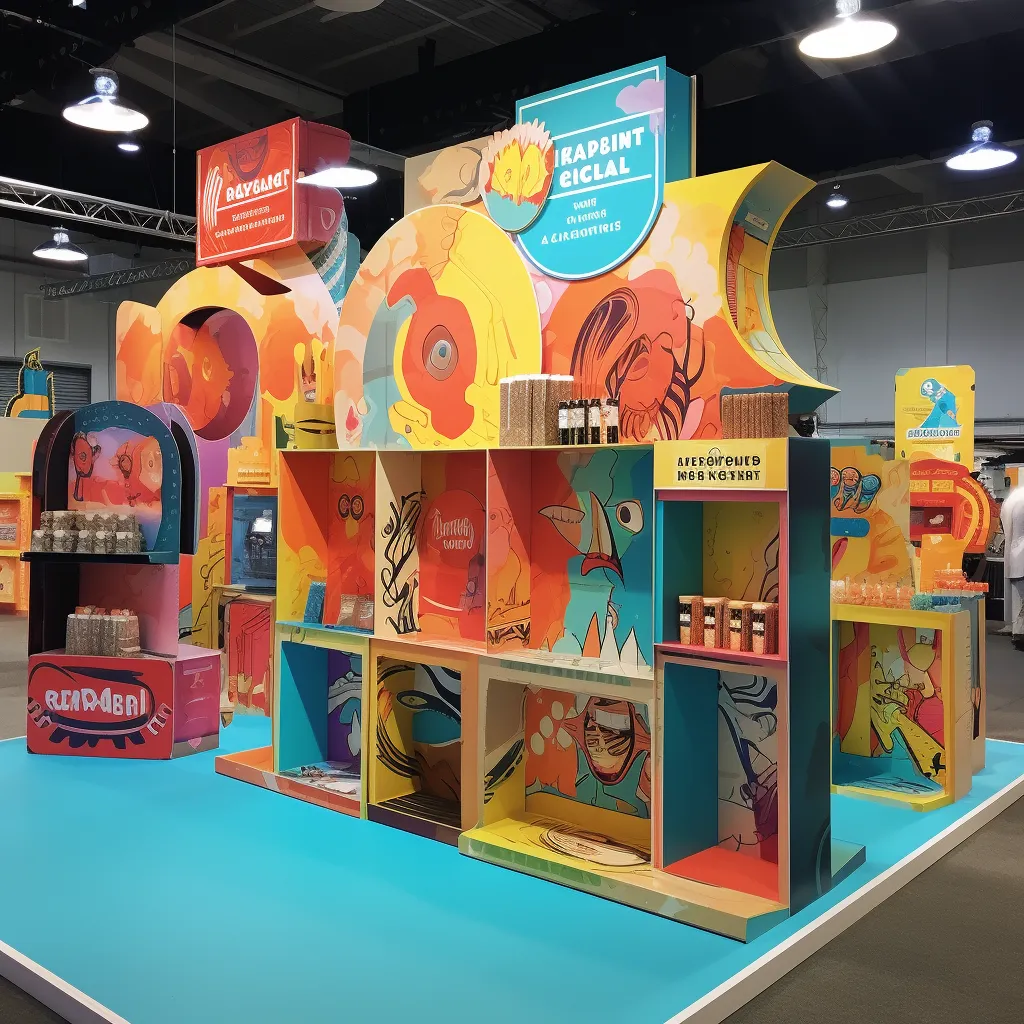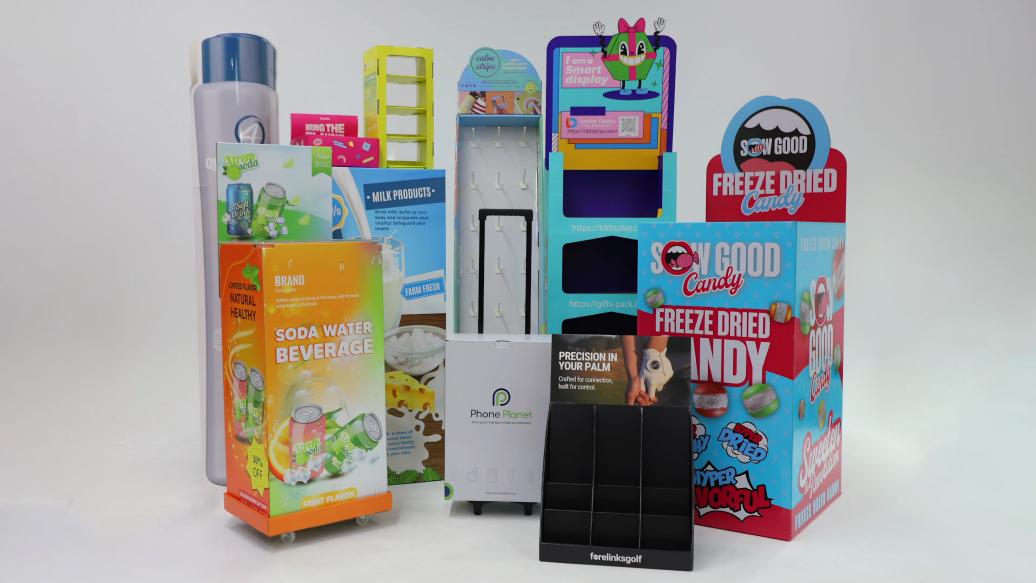Are you tired of getting quotes that don't match the final bill? Hidden costs can ruin your budget, creating stress and delaying your launch. Getting it right is simple.
To get an accurate estimate for a custom retail display, you must provide your supplier with detailed specifications. This includes precise dimensions, material preferences, quantity, graphic design files, and any special structural or interactive features. Clear, upfront communication is the key to preventing unexpected costs later on.

Getting a precise quote is the first crucial step. Over my 16 years in this industry, I've seen how a small detail missed at the start can cause big problems down the line. But a good quote is just the beginning. Once your display is built and in the store, how do you know if it's even working? You need a way to measure its success and ensure your investment is paying off. Let's explore how to turn that initial estimate into a display that truly performs and delivers results for your brand.
How do you measure the effectiveness of a display system in the retail industry?
You've spent money on a beautiful new display, but do you know if it's actually increasing sales? Without clear data, you are just guessing and could be wasting your investment.
To measure display effectiveness, track the sales lift1 of the featured product by comparing sales before and during the campaign. Also, monitor foot traffic2 around the display and observe customer engagement levels3. Direct feedback from store staff offers crucial real-world insights into its performance.

Measuring success isn't just about the final sales number; it’s about understanding the whole picture. I once worked with a client whose display had a modest sales lift1, but what the numbers didn't show was the full story. To find out what's really going on, you have to look at both the numbers and the human element.
Key Performance Indicators4 (KPIs) to Track
You need a few simple but powerful metrics to see if your display is hitting the mark. These KPIs give you concrete data to prove your return on investment. The most important ones are sales lift1, foot traffic2, and customer interaction5. Looking at these together gives you a clear view of how shoppers are responding to your work.
| KPI Metric | How to Measure It | Why It Matters |
|---|---|---|
| Sales Lift | Compare product sales before and after the display. | Directly connects the display to revenue. |
| Foot Traffic | Use store cameras or sensors to count nearby shoppers. | Shows if the display is drawing people in. |
| Customer Dwell Time | Observe how long shoppers stop at the display. | Indicates the level of interest and engagement. |
| Staff Feedback | Ask store employees about customer comments and restocking. | Provides real-world, qualitative insights. |
The Power of Observation
Numbers tell you what is happening, but observations tell you why. I always encourage my clients to visit the stores. Watch how people interact with the display. Do they stop? Do they touch the product? Do they look confused? I remember a project where sales were just okay. But when we visited the store, we saw that the display was difficult for staff to restock, so it was often half-empty. The design was fine, but the practical application was flawed. That's a problem we fixed immediately, and sales improved. You can't get that kind of insight from a spreadsheet alone.
How can a business build an effective retail display to sell a product?
You need your display to do more than just sit there. You need it to actively sell your product. A boring or confusing display gets ignored, wasting your investment and potentially hurting your brand.
To build an effective retail display, start with a single, clear message. Use a strong visual hierarchy6, brand-consistent graphics, and good lighting to grab attention. Most importantly, ensure the structure is durable, easy to assemble, and designed for its specific retail environment.

Building a great display is a process that balances creativity with practical reality. A stunning design is useless if it falls apart or is impossible for a store employee to set up. I've seen brilliant ideas fail because they forgot the basics. A successful display has to work in the real world, not just on a computer screen. It must be designed with the end-user in mind, from the customer who buys the product to the staff member who maintains the display.
The Design Blueprint: Message and Audience
Before you think about materials or structure, you must answer two questions: Who are you talking to? And what do you want to say? Your display’s design should be entirely shaped by your target audience. A display for a high-tech gadget will look very different from one for organic baby food. The message should be simple and direct. Don't try to say ten things at once. Pick the single most important benefit and make it the hero. For example, if your product is "all-natural," use earthy colors and textures. If it's "fast-acting," use bold, energetic graphics. Everything should support that one core idea.
Structure, Materials, and Practicality
A display must be sturdy enough to survive a busy retail environment. Material choice is critical. While creating a display for a beverage company, we had to choose a material that could handle potential moisture and the weight of the products. We used a coated corrugated cardboard that was both strong and moisture-resistant. Ease of assembly is another huge factor. Store staff are busy; they don't have time to read a complex instruction manual. I always aim for designs that can be set up in minutes with no tools required.
| Material Type | Pros | Cons | Best For |
|---|---|---|---|
| Corrugated Cardboard | Lightweight, cost-effective, recyclable | Less durable, susceptible to moisture | Short-term promotions, lightweight products |
| Foamcore | Smooth finish, great for printing | Can dent easily, less structural | Header cards, internal signage |
| Semi-Permanent (Wood, Metal) | Very durable, premium look | Heavy, higher cost, complex | Long-term "store-in-store" displays, high-value items |
How often should retailers change their displays?
Is your retail display starting to blend into the background? If a display stays up for too long, regular customers stop seeing it, a problem we call "shopper fatigue7."
Retailers should typically change their displays every 4 to 6 weeks to align with promotional calendars or seasons. For core, year-round products, refreshing the graphics or messaging quarterly is enough to keep the presentation looking fresh and maintain customer interest without a complete overhaul.
[^8] in a retail store.](https://leader-display.com/wp-content/uploads/2024/12/Beverage-Cardboard-Display-Stand-5-1.webp)
The right timing for a display change is a balancing act. Change too often, and you'll blow your budget. Don't change enough, and you'll become invisible. The key is to plan ahead and have a strategy. It's not just about swapping things out randomly; it's about introducing newness at moments that matter most to your customers and your sales cycle. From my experience, the most successful brands are those who think of their displays as part of an ongoing conversation with their customers, not just a one-time statement.
Key Moments for a Refresh
You don't need to guess when to make a change. There are clear triggers that tell you it's time for something new. The most obvious ones are tied to the calendar.
- Seasonal Campaigns: Holidays like Christmas, Valentine's Day, or summer events are perfect opportunities. Customers expect to see new things during these times.
- New Product Launches: A new product deserves a grand entrance. A fresh display is the best way to announce its arrival.
- Marketing Promotions: If you're running a special offer or "buy one, get one" deal, the display needs to communicate that message clearly.
- Declining Sales: If you notice a dip in sales from a particular display, it's a clear sign that it has lost its effectiveness. It's time for a change.
- Physical Wear and Tear: A damaged or dirty display looks unprofessional and hurts your brand. It must be replaced immediately.
The Evergreen Strategy: Modular and Cost-Effective
What about your best-selling products that are on the shelf all year? You can't afford a completely new display every month. This is where smart, modular design8 comes in. For a snack company I work with, we designed a durable main display unit that could stay in the store for a long time. However, we created interchangeable header cards and side panels. This allowed them to easily swap out the messaging for different flavor promotions—one month it's "Spicy Sensation," the next it's "Cheesy Goodness." This approach keeps the display looking new and relevant without the cost and waste of replacing the entire structure. It’s a win-win: cost-effective for the brand and always fresh for the shopper.
How do I make a good shop display?
You know your product is great, but how do you get it to jump off the shelf in a busy store? If your display is boring, cluttered, or confusing, shoppers will walk right past it.
To make a good shop display, keep it simple, focused, and well-lit. Use the "Rule of Three" to avoid a cluttered look, create a clear focal point9 with your hero product, and choose colors that pop. Ensure your brand and call-to-action are instantly visible.

Over the years, I've learned that the most effective displays follow a few simple but powerful rules. It's not about being the loudest or biggest. It's about being the clearest. A good display guides the customer's eye exactly where you want it to go and makes it incredibly easy for them to understand your product and want to buy it. Think of it as a silent salesperson, working for you 24/7.
Core Principles of Visual Merchandising
You don't need to be an art director to create an effective display. Just follow some tried-and-true principles. The "Rule of Three" is a great starting point. Grouping products in sets of three (or other odd numbers) is more visually appealing and less rigid than symmetrical pairs. Next, create a focal point. This is usually your hero product, placed at eye level. Then, use color and lighting to your advantage. A splash of bright, contrasting color can draw attention from across an aisle. Simple spotlights can make your product look more valuable and appealing.
A Practical Checklist for Your Next Display
When I work with product designers like Peter, I always come back to a simple checklist. It helps us ensure we've covered all the bases from both a creative and practical standpoint. This isn't just theory; it's a practical tool to make sure the final display does its job in a real-world store.
| Checkpoint | Description | Why It's Important |
|---|---|---|
| Clear Focal Point | Is it immediately obvious which product is the star of the show? | Guides the customer's eye and prevents confusion. |
| Simple Message | Can a shopper understand the main benefit in 3 seconds or less? | Catches attention in a fast-paced retail environment. |
| Product Accessibility | Can a customer easily reach out and grab the product? | Removes physical barriers to making a purchase. |
| Brand Consistency | Does the display's look and feel match your overall brand identity? | Builds brand recognition and trust with the customer. |
| Structural Stability | Is it sturdy enough to hold the products and withstand shopper traffic? | Ensures safety and maintains a professional appearance. |
Conclusion
Getting an accurate estimate requires clear details upfront. A truly effective display is designed with purpose, its success is measured with data, and it is refreshed to stay relevant.
-
Learn effective methods to measure sales lift and understand its impact on retail display success. ↩ ↩ ↩
-
Discover how monitoring foot traffic can provide insights into the effectiveness of your retail displays. ↩ ↩
-
Explore techniques to measure customer engagement and improve your retail display strategies. ↩
-
Learn about essential KPIs that help evaluate the success of retail displays. ↩
-
Understand how customer interaction can shape the design and effectiveness of retail displays. ↩
-
Discover how visual hierarchy can enhance the effectiveness of your retail displays. ↩
-
Learn about shopper fatigue and strategies to keep your displays engaging and effective. ↩
-
Explore how modular design can provide flexibility and cost-effectiveness in retail display solutions. ↩
-
Discover tips for establishing a clear focal point that draws customer attention to your products. ↩






2 Responses